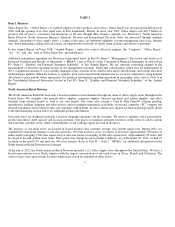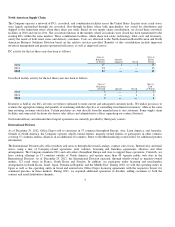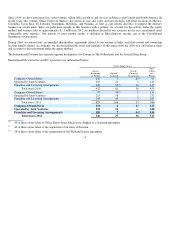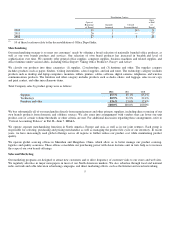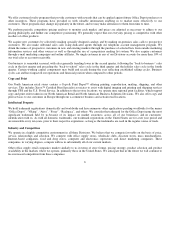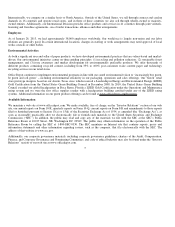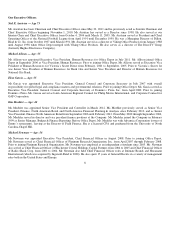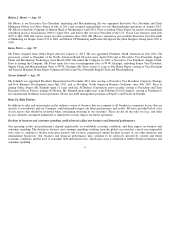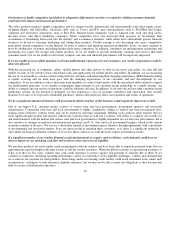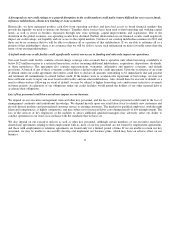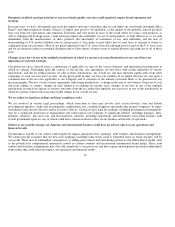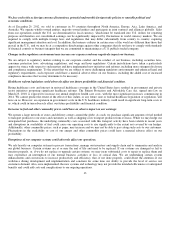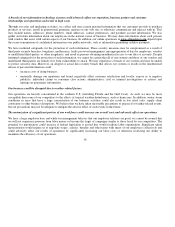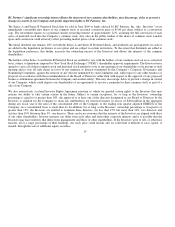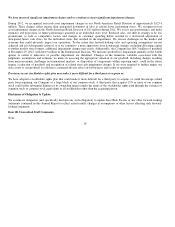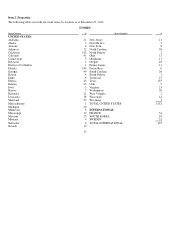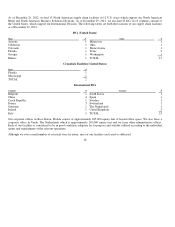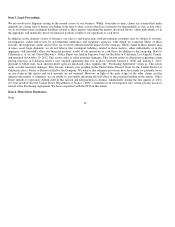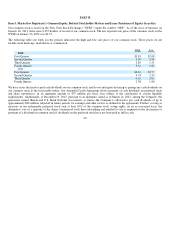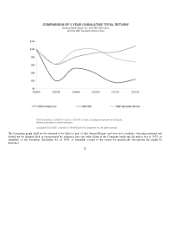Office Depot 2012 Annual Report Download - page 13
Download and view the complete annual report
Please find page 13 of the 2012 Office Depot annual report below. You can navigate through the pages in the report by either clicking on the pages listed below, or by using the keyword search tool below to find specific information within the annual report.
A
downgrade in our credit ratings or a general disruption in the credit markets could make it more difficult for us to access funds,
refinance indebtedness, obtain new funding or issue securities.
Historically, we have generated positive cash flow from operating activities and have had access to broad financial markets that
provide the liquidity we need to operate our business. Together, these sources have been used to fund operating and working capital
needs, as well as invest in business expansion through new store openings, capital improvements and acquisitions. Due to the
downturn in the global economy, our operating results have declined. Further deterioration in our financial results could negatively
impact our credit ratings, our liquidity and our access to the capital markets. Certain of our existing indebtedness matures in 2013 and
there can be no assurance that we will be able to refinance all or a portion of that indebtedness. If we are able to refinance all or
a
portion of that indebtedness, there is no assurance that we will be able to secure such refinancing on more favorable terms than the
terms of our existing indebtedness.
A
default under our credit facility could significantly restrict our access to funding and adversely impact our operations.
Our asset based credit facility contains a fixed charge coverage ratio covenant that is operative only when borrowing availability is
below $125 million or prior to a restricted transaction, such as incurring additional indebtedness, acquisitions, dispositions, dividends,
or share repurchases. The agreement also contains representations, warranties, affirmative and negative covenants, and default
provisions. A breach of any of these covenants could result in a default under our credit agreement. Upon the occurrence of an event
of default under our credit agreement, the lenders could elect to declare all amounts outstanding to be immediately due and payable
and terminate all commitments to extend further credit. If the lenders were to accelerate the repayment of borrowings, we may not
have sufficient assets to repay our asset based credit facility and our other indebtedness. Also, should there be an event of default, or
a
need to obtain waivers following an event of default, we may be subject to higher borrowing costs and/or more restrictive covenants
in future periods. Acceleration of our obligations under our credit facilities would permit the holders of our other material debt to
accelerate their obligations.
L
oss of key personnel could have an adverse impact on our business.
We depend on our executive management team and other key personnel, and the loss of certain personnel could result in the loss o
f
management continuity and institutional knowledge. We depend heavily upon our retail labor force to identify new customers and
provide desired products and personalized customer service to existing customers. The market for qualified employees, with the right
talent and competencies, is highly competitive, and may subject us to increased labor costs during periods of low unemployment. The
loss of the services of key employees or the inability to attract additional qualified managers may adversely affect our ability to
conduct operations in our stores in accordance with the standards that we have set.
We also depend on our executive officers as well as other key personnel. Although certain members of our executive team have
entered into agreements relating to their employment with us, most of our key personnel are not bound by employment agreements,
and those with employment or retention agreements are bound only for a limited period of time. If we are unable to retain our key
personnel, we may be unable to successfully develop and implement our business plans, which may have an adverse effect on ou
r
business.
11


